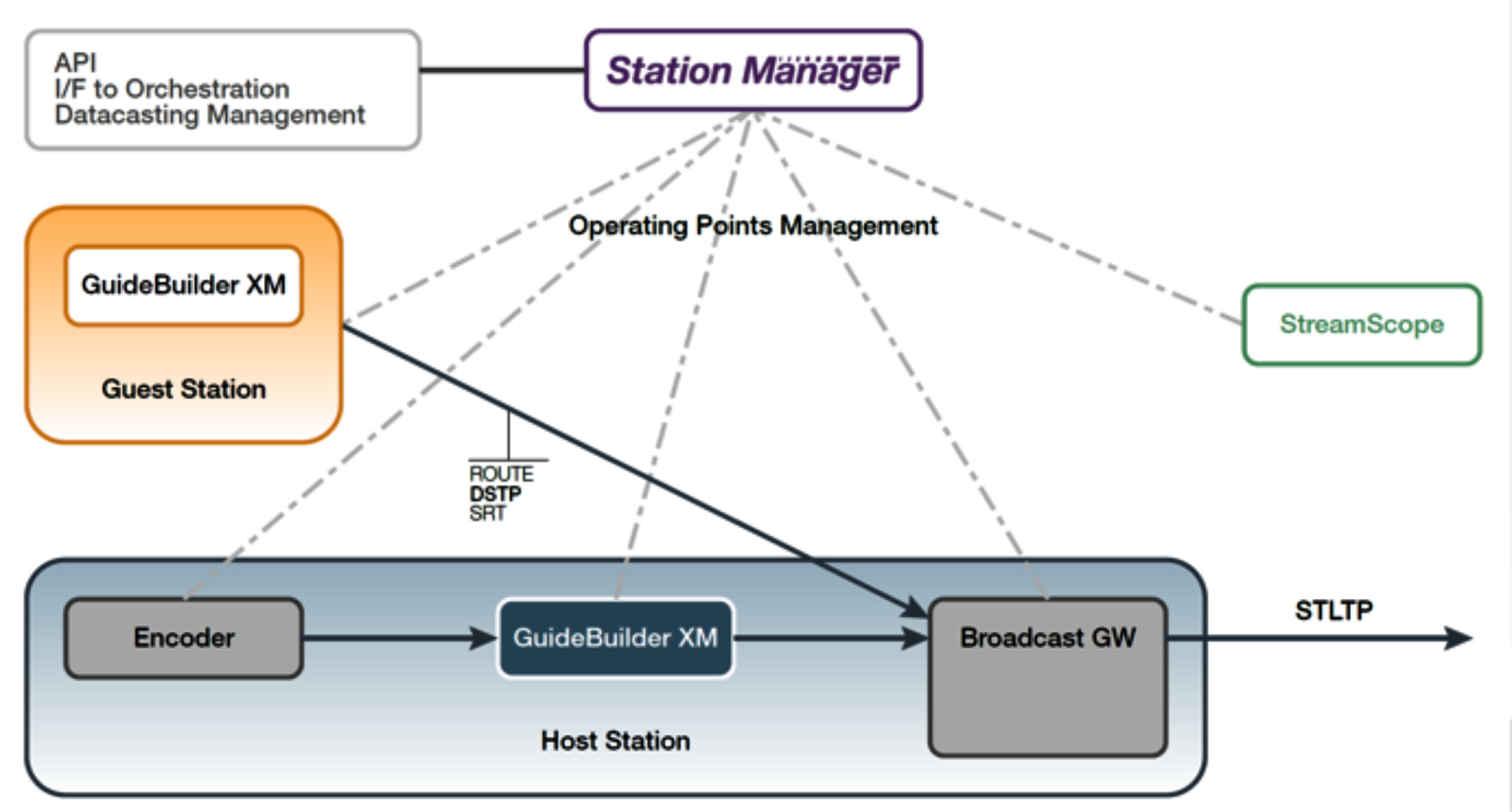RF at the 2024 NAB Show—Part 1: Products
Doug shares some gear from the show floor that caught his eye

This month I’ll focus on what I saw on the exhibit floor at NAB Show. This isn’t a comprehensive overview of all the RF and transmission exhibits and show news—other articles in TV Tech do that well. Instead, I’ll be looking at a few exhibits I found interesting. Next month I’ll discuss other RF technology topics from the show, including BPS and 5G Broadcast.
Rohde & Schwarz
Many broadcasters purchased Rohde & Schwarz THU-9 transmitters during and after the repack, so I wasn’t surprised that Rohde’s unveiling of its new UHF TV transmitter, the TE1, attracted a large crowd Monday afternoon despite its location in the South Hall, far away from other transmitter and distribution exhibits.
Some of the changes are apparent looking at the transmitter. Unlike the THU9, which was designed for worldwide use, the TE1 was designed specifically for the U.S. market where higher power transmitters are required. The exciters mount horizontally in the rack, allowing up to 14 amplifiers per cabinet and increasing the per-cabinet output power to 24.5 kW. Looking at the back of the transmitter, you can see the changes in the combiner output and load.
Also, the power input is now at the top of the cabinet, cleaning up the wiring on the right side (from the rear) power distribution panel. (The colorful LED cabinet lighting in the photo is not available as an option.)

The exciter includes the ATSC 3.0 modulator—a separate SDE-900 unit is not required. Reflecting the TE1 North American market focus, the specifications show ATSC and ATSC 3.0 as the only supported standards. The product brochure says it is “Prepared for 5G Broadcast.”
End-to-End ATSC 3.0 Transmission System
Anywave showed a complete ATSC 3.0 signal chain that will make it easy for broadcasters, particularly LPTVs, to switch to ATSC 3.0. It includes the encoder, gateway and scheduler, and exciter.

A key feature of the gateway/scheduler is a custom design using FPGAs rather than software running on a server. This enables a complete ATSC 3.0 encoder, gateway/scheduler and exciter in three rack units of space to consume a fraction of the power required for a server-based system.
Their AW9200 Exciter+ can be configured for use as a translator for ATSC 3.0 with a gateway option that allows modification of signaling at the translator site without additional gateways.
Smart Dummy Load
As transmitters become more efficient, engineers are taking a closer look at the power consumed by dummy loads in systems with multiple transmitter cabinets. When one of the cabinets shuts down, the combiner becomes unbalanced.
In a two-cabinet system, this results in half the remaining power going into a reject load. This doesn’t happen that often, so any power used to cool the dummy load while both cabinets are operating normally is wasted.

Dielectric’s solution is the “OptiLoad,” which turns on the cooling pumps only when required. This is more complicated than it sounds. If the reject load fails, it will shut down the entire transmitter. Worse, if it fails to shut down the transmitter and a cabinet fails, the coolant pressure and steam generated by the load can cause a mess before the reflected power takes down the transmitter. The OptiLoad includes RF sensors and other features designed to prevent such disasters.
Simplifying ATSC 3.0 Station Configuration
Most ATSC 3.0 stations set their modulation and coding and PLP configura-tions once and don’t change them. Triveni showed its “Station Manager,” which makes setting, storing and restoring ATSC 3.0 configurations easier.
Anyone who has looked at the ATSC 3.0 standard knows there are an almost infinite number of configurations available. Changing one parameter can require changing another parameter to maintain a legal ATSC 3.0 stream. The Station Manager interface makes this easier.

I can also see how Station Manager could become an important part of the broadcast core network, which will allow broadcasters to offer excess data capacity for other uses, such is IoT. This will likely require participating broadcasters to change their transmission parameters to accommodate demand for data delivery with different bandwidth and robustness requirements.
Broadcast Positioning Service Solution
Many engineers see the ATSC 3.0 Broadcast Positioning Service (BPS) as a key driver of ATSC 3.0 support from the government and perhaps device manufacturers as well. I’ve discussed BPS before and will have more on it next month, but wanted to highlight one product that will make it easier for broadcasters to add BPS capability to their transmission systems. Stations that want to transmit BPS signals will need to precisely time the transmission of the ATSC 3.0 bootstrap.

The Avateq AVQ-1050 consists of a BPS receiver and a BPS synchronizer, which together compare the received signal with a reference clock and adjust the transmission time to make it a stable, precise time source. It can directly control the transmission time from a Rohde & Schwarz exciter without connection to the gateway and scheduler, which may not be located at the transmitter site.
ATSC 3.0 for Legacy Cable Systems
As the transition to ATSC 3.0 progresses, there will be a need for cable companies to receive ATSC 3.0 signals. While the ideal scenario would be for the cable companies to deliver a stream that enables most of the ATSC 3.0 features, during the transition, they will need to convert the ATSC 3.0 to a form that will work with their existing set-top boxes.
To that end, the Sencore TXS3800 ATSC 3.0 to ATSC 1.0 transcoder can provide decryption and transcode video and audio from ATSC 3.0 to ATSC 1.0 formats in an ATSC 1.0 transport stream.
NextGen-Compliant Dongles
I was happy to see several low-cost set-top box devices displayed in the ATSC booth that support A3SA content protection. However, I’m still looking for an ATSC 3.0 NextGen-compliant tuner I can plug into a USB port of my laptop to view ATSC 3.0 protected content on the road.
Dongles have been available for a few years, but none made it to the consumer market and none I’ve found support A3SA content protection. It doesn’t appear that will happen soon, but after seeing compliant set-top boxes based on Android TV, perhaps it will be possible to create an ATSC 3.0 dongle that will work with Widevine-enabled Android tablets. ATSC 3.0 has many advantages when it comes to mobility so I expect there would be demand for portable ATSC 3.0 receivers, especially in areas prone to hurricanes and other natural disasters. l
As always, your comments and questions are welcome. Email me at dlung@transmitter.com.
Get the TV Tech Newsletter
The professional video industry's #1 source for news, trends and product and tech information. Sign up below.

Doug Lung is one of America's foremost authorities on broadcast RF technology. As vice president of Broadcast Technology for NBCUniversal Local, H. Douglas Lung leads NBC and Telemundo-owned stations’ RF and transmission affairs, including microwave, radars, satellite uplinks, and FCC technical filings. Beginning his career in 1976 at KSCI in Los Angeles, Lung has nearly 50 years of experience in broadcast television engineering. Beginning in 1985, he led the engineering department for what was to become the Telemundo network and station group, assisting in the design, construction and installation of the company’s broadcast and cable facilities. Other projects include work on the launch of Hawaii’s first UHF TV station, the rollout and testing of the ATSC mobile-handheld standard, and software development related to the incentive auction TV spectrum repack. A longtime columnist for TV Technology, Doug is also a regular contributor to IEEE Broadcast Technology. He is the recipient of the 2023 NAB Television Engineering Award. He also received a Tech Leadership Award from TV Tech publisher Future plc in 2021 and is a member of the IEEE Broadcast Technology Society and the Society of Broadcast Engineers.
